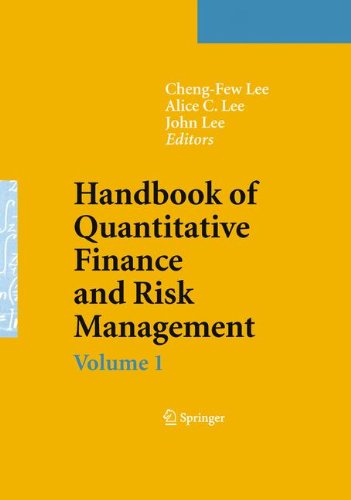

Most ebook files are in PDF format, so you can easily read them using various software such as Foxit Reader or directly on the Google Chrome browser.
Some ebook files are released by publishers in other formats such as .awz, .mobi, .epub, .fb2, etc. You may need to install specific software to read these formats on mobile/PC, such as Calibre.
Please read the tutorial at this link: https://ebookbell.com/faq
We offer FREE conversion to the popular formats you request; however, this may take some time. Therefore, right after payment, please email us, and we will try to provide the service as quickly as possible.
For some exceptional file formats or broken links (if any), please refrain from opening any disputes. Instead, email us first, and we will try to assist within a maximum of 6 hours.
EbookBell Team

4.1
10 reviewsQuantitative finance is a combination of economics, accounting, statistics, econometrics, mathematics, stochastic process, and computer science and technology. Increasingly, the tools of financial analysis are being applied to assess, monitor, and mitigate risk, especially in the context of globalization, market volatility, and economic crisis. This three-volume handbook, comprised of over 100 chapters, is the most comprehensive resource in the field to date, integrating the most current theory, methodology, policy, and practical applications. Showcasing contributions from an international array of experts, the Handbook of Quantitative Finance and Risk Management is unparalleled in the breadth and depth of its coverage. Volume 1 presents an overview of quantitative finance and risk management research, covering the essential theories, policies, and empirical methodologies used in the field. Chapters provide in-depth discussion of portfolio theory and investment analysis. Volume 2 covers options and option pricing theory and risk management. Volume 3 presents a wide variety of models and analytical tools. Throughout, the handbook offers illustrative case examples, worked equations, and extensive references; additional features include chapter abstracts, keywords, and author and subject indices. From "arbitrage" to "yield spreads," the Handbook of Quantitative Finance and Risk Management will serve as an essential resource for academics, educators, students, policymakers, and practitioners.
Selected entries include: